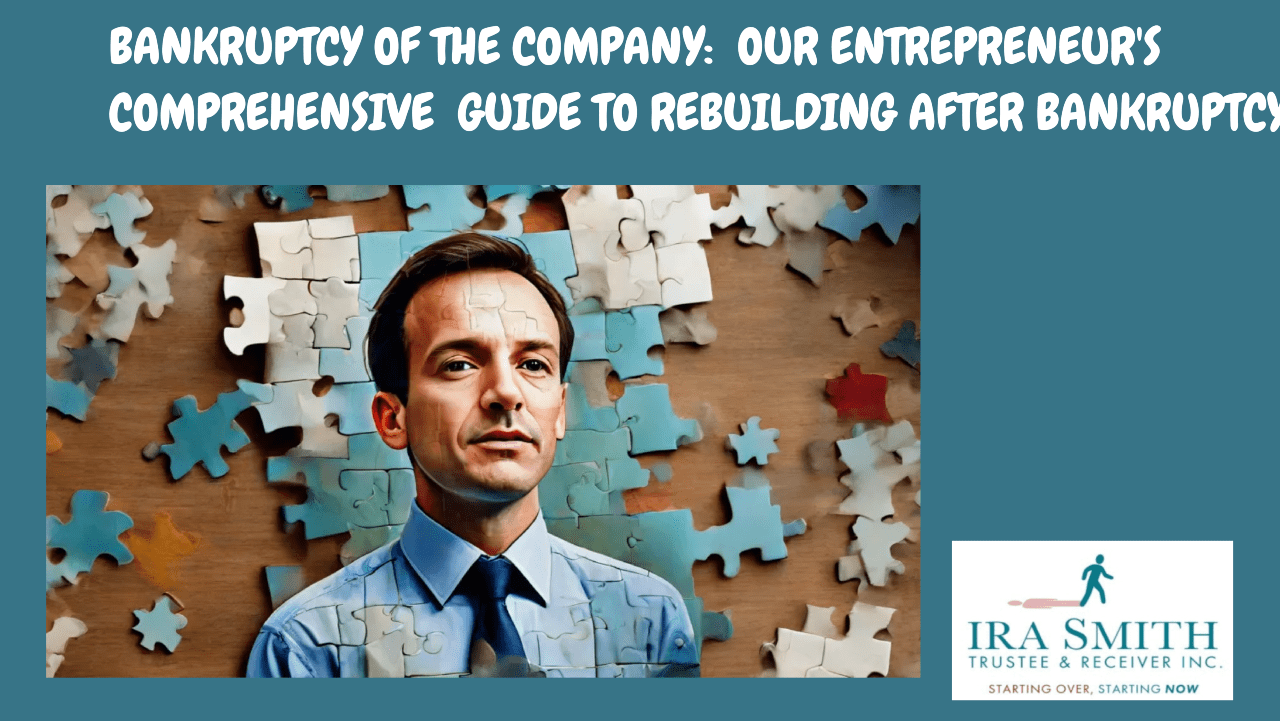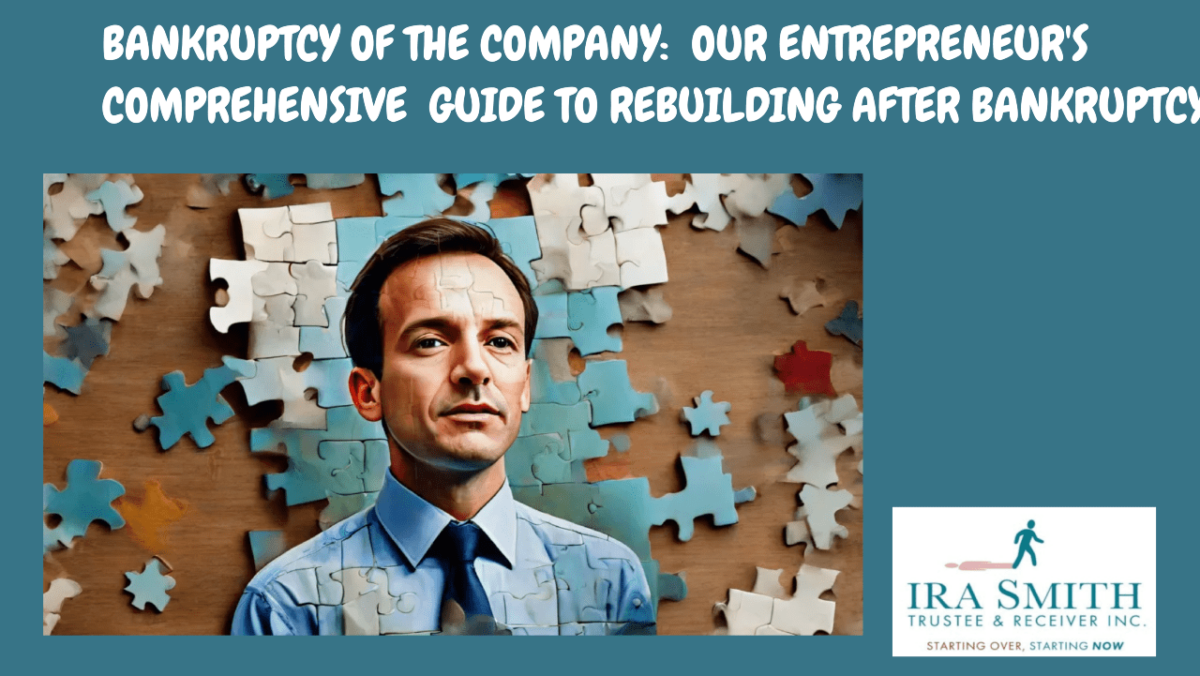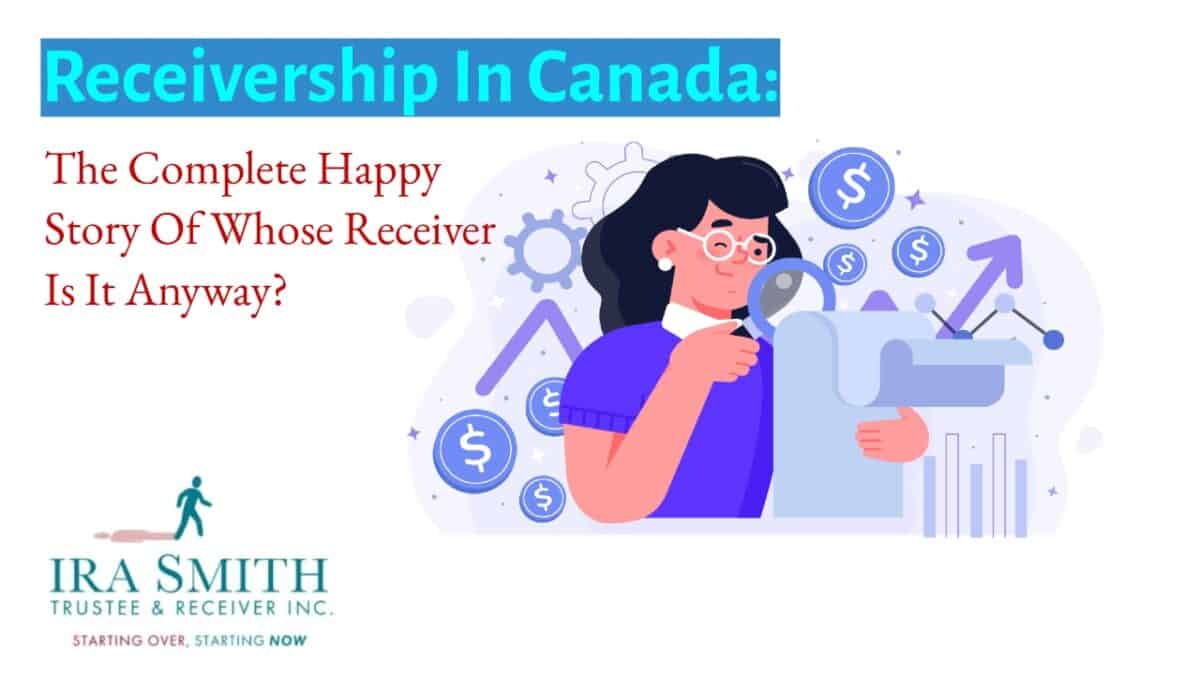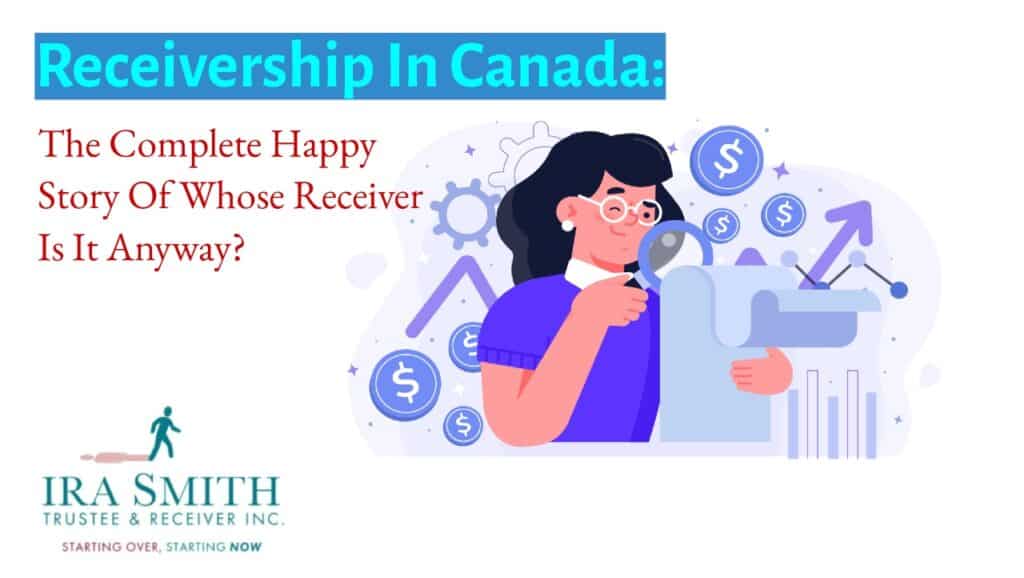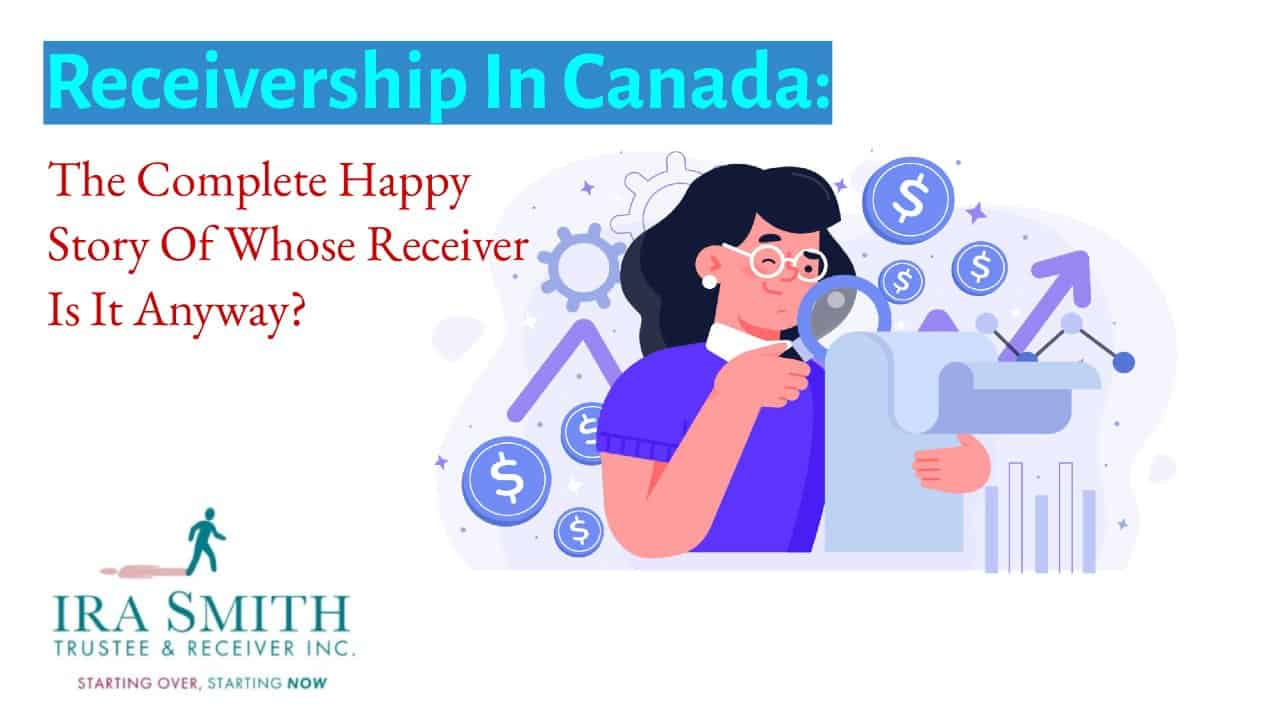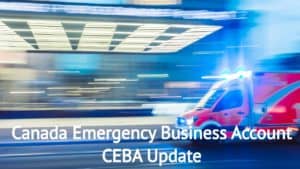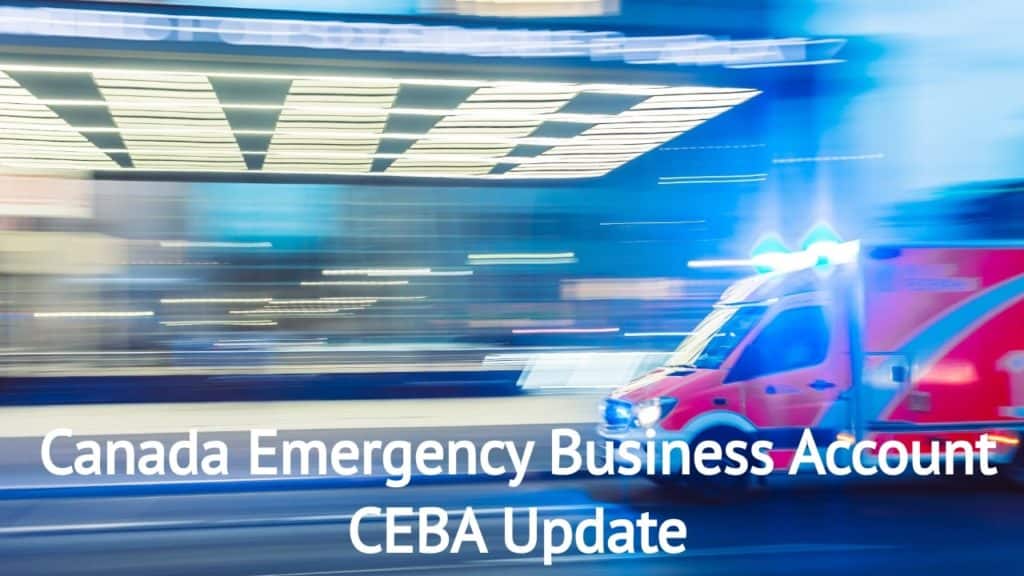Bankruptcy of the Company: Introduction
Imagine being at the helm of a thriving business, only to watch the bankruptcy of the company. As an insolvency professional, a Canadian licensed insolvency trustee (formerly called a trustee in bankruptcy), I have witnessed the rollercoaster of emotions that come with financial failure, often paired with the entrepreneur’s sense of guilt and loss that can feel insurmountable.
Recovering from the bankruptcy of the company is challenging but possible. By understanding the impacts, assessing finances, creating a strong recovery plan, and rebuilding credit and reputation, business owners can rise again with resilience and prepare for future growth.
This is not the end. It’s a transformative stage that opens doors to rethinking, reconstructing, and revitalizing your future. Let’s explore the roadmap to recovery together, filled with actionable advice and insightful anecdotes.
Bankruptcy of the Company: Understanding Business Bankruptcy
Canadian law offers two primary types of bankruptcy for addressing the insolvent company corporate bankruptcy process:
Liquidation
Liquidation is the process of closing a business and selling its assets to generate funds. The proceeds from these sales are then used to pay off creditors. While it represents the conclusion of the company’s operations, understanding this process can help you navigate the winding down of a business effectively.
Reorganization
This initiative aims to thoughtfully reshape the company’s financial and operational structures, ensuring its ongoing success and stability. Reorganization presents a valuable opportunity for businesses facing financial difficulties, allowing them to effectively address and potentially overcome their economic challenges. Typically, this process is carried out through a commercial proposal under the Bankruptcy and Insolvency Act. For larger corporations with debts of at least $5 million, reorganization can take place under the Companies’ Creditors Arrangement Act.
Let’s take a closer look at each of these options to better understand how they can help.
Liquidation under bankruptcy of the company
Liquidation is the process of winding up a company that can no longer meet its financial obligations. It follows a structured corporate bankruptcy process outlined in the BIA, which bears similarities to Chapter 7 of the US Bankruptcy Code. Corporate bankruptcy is also called commercial bankruptcy.
Here’s a step-by-step breakdown of liquidation:
- The decision to file:
- The board of directors makes the difficult decision to file for bankruptcy and appoint a person to sign the official bankruptcy documents.
- Assignment in Bankruptcy: A director, or the sole director, signs the required bankruptcy documents to make the company’s assignment into bankruptcy.
- Appointment of the Licensed Insolvency Trustee: An insolvency trustee is appointed to oversee the process.
- Asset Transfer: All corporate assets are transferred to the Licensed Insolvency Trustee, which then manages and sells them.
- Distribution to Creditors: Proceeds from asset sales, after the cost of the corp bankruptcy proceedings, are distributed to creditors based on a predetermined legal priority.
- Secured creditors, such as lenders with liens on company assets, generally have priority over unsecured creditors.
- The company ceases to operate: Once assets are distributed, although the bankrupt corporation is not legally dissolved, it no longer operates.
Depending on whether the company is federally or provincially incorporated, eventually, the appropriate government authority will cancel the company’s charter due to the bankruptcy of the company.
Liquidation can be a complex process, but it offers a clear and organized approach to closing a company that is experiencing significant financial challenges. This process ensures that assets are distributed fairly among creditors, helping to bring some resolution to a difficult situation. If you find yourself in this position, rest assured that there are steps in place to manage the process as smoothly as possible.
“The closure of a business doesn’t just impact balance sheets, it impacts lives.”
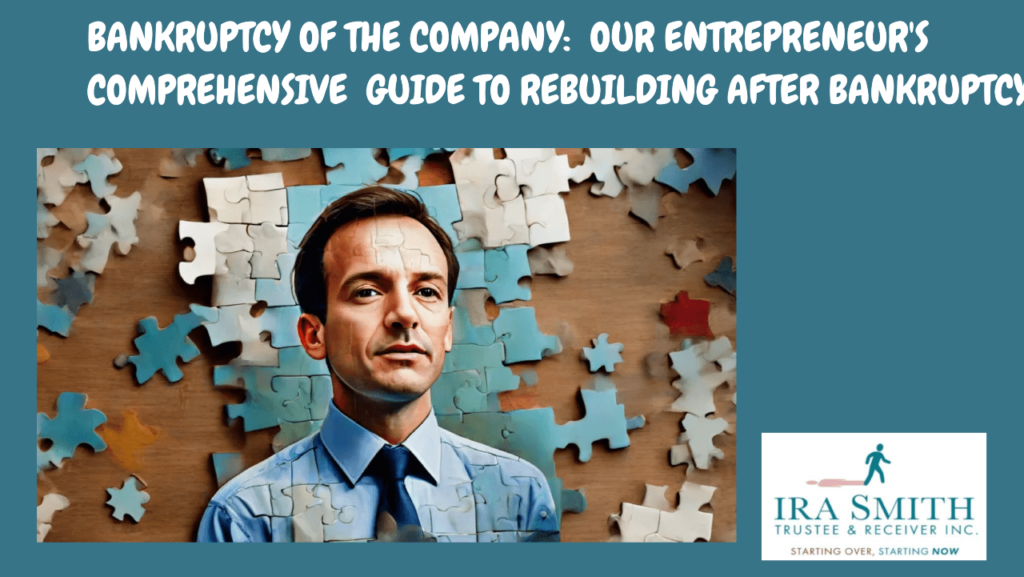
Reasons for Bankruptcy of the Company
Financial Challenges
- Cash Flow Management: Many companies struggle to manage their cash flow effectively, leading to a buildup of debt and ultimately, the bankruptcy of the company. This can be due to a variety of factors, including poor budgeting, delayed payments from customers, or over-reliance on credit.
- High Debt Levels: Companies that take on too much debt can quickly become overwhelmed by their financial obligations. This can be particularly true for companies that have taken on debt to finance expansion or acquisitions.
- Inefficient Use of Assets: Companies that fail to optimize their use of assets, such as inventory or equipment, can struggle to generate sufficient revenue to meet their financial obligations.
- Poor Financial Planning: Companies that fail to plan for the future or make poor financial decisions can quickly find themselves in a difficult financial situation.
Operational Issues
- Inefficient Operations: Companies that fail to streamline their operations or make inefficient use of resources can struggle to remain competitive and profitable.
- Lack of Scalability: Companies that may not be fully attuned to shifts in the market or industry can find it difficult to scale their operations effectively. By staying adaptable and responsive to changes, businesses can better meet growing demand and seize new growth opportunities.
- Poor Management: Companies that are poorly managed or lack effective leadership can struggle to make sound business decisions and ultimately, may force the bankruptcy of the company.
- Failure to Innovate: Companies that fail to innovate or adapt to changes in the market can quickly become obsolete and struggle to remain competitive.
External Factors
- Economic Downturn: Companies that operate in industries that are heavily reliant on consumer spending or are sensitive to economic fluctuations can be particularly vulnerable to bankruptcy during economic downturns.
- Regulatory Changes: Companies facing evolving regulations or laws may find it challenging to adapt. However, with the right strategies and support, they can navigate these changes effectively and avoid potential difficulties. It’s important to stay informed and seek assistance to thrive in a dynamic regulatory environment.
- Competition: Companies that operate in highly competitive industries can struggle to remain profitable and may force the bankruptcy of the company if they are unable to differentiate themselves or compete effectively.
- Natural Disasters: Companies that are affected by natural disasters, such as hurricanes or wildfires, can struggle to recover and may ultimately be forced into bankruptcy.
Understanding the Ripple Effects of Bankruptcy
The bankruptcy of the company can turn your business life upside down. But understanding its effects can help you navigate this rough terrain. What are the immediate and long-term consequences?
Understanding The Immediate Effects on Your Credit Score
It’s important to know that your business’s credit score is separate from your credit score. The company is considered a distinct legal entity, meaning that, generally, its financial activities do not directly impact your credit score. However, as an entrepreneur, if you’ve personally guaranteed any bank loans or lines of credit for your business, this could affect you personally. If the company is unable to repay those loans, the bank will look to you to cover any outstanding amounts.
Additionally, as a director of the company, you hold responsibility for any unremitted employee source deductions and unremitted HST owed to the Canada Revenue Agency. Being aware of these obligations can help you manage your financial responsibilities more effectively and protect your credit standing. If you have questions or need further clarification, don’t hesitate to reach out for assistance.
So although the bankruptcy of the company does not directly affect your personal credit score, depending on what your financial position is now and how it is affected by the bankruptcy of the company, it could very well have a negative impact on your credit score.
The bankruptcy of the company gets reported to the two Canadian credit bureaus, TransUnion and Equifax. Depending on how your financial situation is affected by the bankruptcy of the company, your credit score may then suffer. It usually suffers in two ways:
- Loss of borrowing capacity: You might find it challenging to get credit lines or loans.
- Higher interest rates: If you do get offers, they may come with steep rates.
Loss of Trust Among Stakeholders
Trust is hard to regain once lost. After filing for corporate bankruptcy, if you wish to start up a new business, suppliers may hesitate to extend credit, leaving you in a bind. Customers might question your reliability, and partnerships can falter.
Legal Limitations Post-Bankruptcy
Additionally, there are legal limitations that follow the bankruptcy of the company. If you are applying for a job or credit for a new business, there could be a question to answer like “Have you ever been a director of a company that filed for bankruptcy”. Your answer could include restrictions on the types of businesses you can operate or positions you can hold.
Understanding these ripple effects is crucial. As financial advisor Jamie Carter wisely said,
“Bankruptcy can be a valuable lesson if you are willing to learn from it and adapt.”
Remember, the impacts extend beyond finances to reputational damage and legal constraints. You can emerge stronger if you take the time to understand these dynamics.

Reflecting on Financial Health Post-Bankruptcy
Understanding Your Financial Landscape
Recovering from the bankruptcy of the company can feel overwhelming. But remember, it all starts with understanding your financial situation. You can’t chart a path forward if you don’t know where you stand. So, how do you begin?
1. Gather Your Financial Documents
- Start by collecting all of your financial statements and paperwork.
- Make sure to include documents that reflect your current cash flow, outstanding debts, and assets.
- Having this information organized will give you a clear understanding of your current financial position, making it easier to assess your situation effectively.
2. Create a List of Assets and Debts
Take the time to write down what you own and what you owe. Having a clear picture of your financial reality is crucial.
- Total Debts: $200,000
- Remaining Assets: $50,000
This exercise can feel daunting. But it’s necessary for redefining your reality. Consider this: how can you build a new foundation without understanding the ground underneath? Remember that you may have given personal guarantees to a lender to the company.
3. Set Realistic Financial Goals
Having a goal gives you direction. Break your recovery journey into achievable steps:
- Short-term goals: Focus on income generation, budget management and expense reduction.
- Long-term goals: Aim for debt reduction and credit score improvement.
Your goals should be tangible and reflect your new financial reality. It’s about letting clarity drive your recovery.
Using Financial Statements as a Roadmap
Your financial statements will serve as a roadmap throughout your recovery journey. They provide essential guidance when making decisions. For example, if you see a consistent cash flow issue, it might be time to revisit your business strategy.
Visualizing Your Financial Position
Understanding your debts versus assets is vital. The chart below visualizes your financial health:
Financial Element | Amount ($) |
|---|---|
Total Debts | $200,000 |
Remaining Assets | $50,000 |
Preparation involves a meticulous assessment of your financial landscape. It’s about clarity, honesty, and setting yourself up for real change.
Crafting a Proactive Recovery Blueprint
Recovery is not merely about surviving; it’s about thriving. You can turn challenges into opportunities with the right proactive plan. Let’s break down some essential steps.
1. Establishing a Comprehensive Budget
Creating a detailed budget is crucial. It serves as your roadmap. Think of it as a financial GPS that helps guide your decisions.
- Forecasting Cash Flows: This allows you to anticipate income and expenses. By understanding your cash flow, you can eliminate any surprises. Wouldn’t it be great to know your financial future better?
- Identifying Fixed and Variable Costs: Understanding the difference between fixed and variable costs is essential for effective planning. Fixed costs, such as rent and salaries, remain constant regardless of production levels, while variable costs fluctuate based on your business activity.
- By recognizing these distinctions, you can make more informed decisions and enhance your financial strategy.
2. Exploring Cost-Cutting Avenues
The goal here is to reduce costs without sacrificing quality. It’s a delicate balance.
- Assess your needs and look for ways to get better deals.
- Cut unnecessary expenditures.
How much could you save by embracing smarter practices?
3. Implementing Financial Management Systems
Robust financial management systems help ensure future stability. They make monitoring and adjusting your budget easier. They are available to everyone at a reasonable cost.
- Adopt accounting software: This can automate processes and save time.
- Conduct regular financial reviews: Staying updated allows for timely adjustments.
“Failing to prepare is preparing to fail.” – John C. Maxwell
These strategies don’t guarantee instant success, but they set a solid foundation for recovery. It’s about making informed decisions today to secure a better tomorrow.

Rebuilding Business Credit: It’s a Marathon, Not a Sprint
Getting into a new business requires building your business credit and access to financing after hardship is a journey. It’s a marathon, not a sprint. Why rush? Quick fixes can lead to long-term pain. Instead, focus on long-term strategies. Patience is your best friend here.
1. Opening New Credit Lines Responsibly
Start slow. Open new credit lines when you can manage them. This is your stepping stone. Think of it like planting seeds. You need to nurture them to grow. Responsible borrowing can improve your credit utilization ratio. This, in turn, boosts your credit score.
- Choose accounts that report to credit bureaus.
- Start with secured credit cards or smaller loans.
2. Using Secured Credit Cards
Secured credit cards are excellent tools for growth. They require a deposit, but they report your payments to credit bureaus. This means you’re building a positive credit history, one payment at a time. It’s about creating a solid foundation for your credit profile.
3. The Importance of Timely Payments
Let’s take a moment to discuss the significance of making payments on time. Your financial reputation is important, and timely payments play a crucial role in demonstrating your responsibility and stability. Think of it as essential for maintaining a healthy credit score – just like breathing is for your well-being.
If you happen to miss a payment, it can negatively impact your score, so it’s important to stay consistent. By prioritizing timely payments, you’re setting yourself up for financial success!
“Rebuilding credit will require discipline and strategy but can lead to an empowered financial future if handled well.”
4. Learning from Others
Many businesses have successfully navigated this path. Their stories are inspiring. They show that it’s possible to come back stronger. Embrace the lessons from those who have rebuilt their credit. Their experiences can guide you.
Remember, this isn’t just about fixing credit. It’s about creating a healthier future for your business. Stay focused on these long-term strategies to ensure lasting impact and success.
Repairing Your Company’s Image: The Reputation Rehabilitation
Repairing Trust through Transparent Communication
After a reputation setback, you might wonder how to regain trust. The answer lies in transparent communication. Regularly update your stakeholders about your journey. Share not just successes but also hurdles. This honesty shows integrity.
Consider this: Wouldn’t it be easier to trust someone who is open about their difficulties? When your audience perceives you as authentic and genuine, it becomes much simpler to reconnect with them.
Leveraging Digital Platforms for Positive Narratives
In today’s connected world, digital platforms play a crucial role. Use social media and your company website to share uplifting stories. Highlight how you’re improving and what your team is excited about.
- Share success stories from employees or customers.
- Post updates on community involvement and corporate social responsibility initiatives.
- Engage with your audience through polls or Q&A sessions.
“Your brand is a story unfolding across all customer touchpoints.” – Jonah Sachs
As this suggests, every interaction is an opportunity to shape your narrative.
Documenting Changes to Restore Confidence
Last but not least, it’s vital to document and showcase changes. This can be anything from new management practices to enhanced product quality. Displaying tangible improvements can effectively demonstrate your commitment to recovery.
Regular updates not only remind stakeholders of your progress but also instill confidence. Keep in mind, that restoring your reputation is a journey, not a sprint.
So, how ready are you to engage fully in your reputation rehabilitation? Embracing these strategies can set your business on the right path.

Innovating Your Way Back to Success: Growth Beyond Recovery
With a foundation grounded in recovery, you’re now in a position to think bigger. The journey ahead is about more than just bouncing back; it’s about redefining your business potential. Let’s explore some key strategies you can adopt.
1. Identifying New Markets and Opportunities for Diversification
After any setback, understanding where to pivot is essential. Ask yourself: Are there untapped markets waiting for your offerings? Consider the possibilities:
- Geographic expansion: Could your product resonate in a different region?
- New demographics: What about targeting younger or older audiences?
- Product diversification: Have you considered exploring complementary products or services that could enhance your offerings? This could be a great way to provide more value to your customers!
2. Investing in Tech and Innovative Practices
In today’s fast-paced environment, standing still is not an option. Innovation is power. Investing in technology can provide you with a competitive edge. For instance:
- Automation: Streamline processes to save time and costs.
- Data analytics: Leverage data to make informed decisions.
- Digital marketing: Boost your online presence to engage and attract new customers effectively.
3. Building Alliances and Partnerships
Alone, you might find challenges hard to overcome. But together? You can achieve new heights. Consider forming strategic alliances. It could mean collaborating with other businesses to:
- Share resources, which can lower costs.
- Access new audiences through shared marketing efforts.
- Mutual growth leads to stronger foundations for both parties.
“In today’s interconnected world, collaboration is the new competition.”
The Importance of Innovation
Absolutely! It’s important to recognize that innovation goes beyond just technology – it’s fundamentally about our mindset. By adopting an innovative approach during recovery phases, we can create opportunities for sustainable growth. Embracing this perspective can truly make a difference!
As you explore these avenues for growth, keep a sharp focus on your core mission and values. This will reignite your passion and drive for business.
Measuring Progress and Celebrating Wins Along Your Journey
Recovery is a journey filled with small victories. To make your path clear and effective, you need to start by establishing Key Performance Indicators (KPIs). These are measurable values that demonstrate how effectively you’re achieving your recovery goals. Think of them as signposts that guide you along the way.
Establishing KPIs to Monitor Your Recovery Journey
Choose KPIs that resonate with your specific recovery objectives. Here are a few ideas:
- Credit score improvements
- Reduction in outstanding debts
- Revenue growth
- Customer retention rates
Why is it important to track these KPIs? Regular updates and adjustments to your recovery strategy are essential. When you notice patterns in your progress, you can adapt your plan accordingly. Are you hitting targets? Celebrate that achievement! Are numbers not improving? Analyze what might need to change.
Acknowledging Small Milestones
It’s crucial to acknowledge and celebrate small milestones. Each small win is a step forward. Taking a moment to recognize these successes not only boosts morale but also motivates you to keep pushing onward. Think about what you have accomplished—each step is proof of your progress.
Incorporating these practices—setting KPIs, adjusting strategies as necessary, and celebrating your successes—can transform your recovery journey. By implementing effective tracking and celebrating your achievements, you can maintain a positive outlook and remain committed to your goals.
“Documenting progress not only keeps you accountable but also energizes your journey forward.”
Remember, recovery from the bankruptcy of the company is not just about bouncing back. It’s about moving forward stronger and more resilient than before. Embrace the journey, celebrate each victory, and you’ll find the path to success becomes much clearer. Keep pushing your limits, and don’t shy away from recognizing the efforts that take you further along your journey.

Bankruptcy of the Company FAQ
1. What happens when my company goes bankrupt?
In Canada, the bankruptcy of the company can be taken down one of two main paths: liquidation and reorganization.
- Liquidation involves closing the business, selling its assets, and using the proceeds to pay off creditors. It signifies the end of the company’s operations.
- Reorganization, typically through a proposal under the Bankruptcy and Insolvency Act, aims to restructure the company’s finances and operations to enable its continued existence.
The specific process and outcome will depend on the chosen path and the company’s individual circumstances.
2. How does company bankruptcy affect my personal credit score?
Generally, the bankruptcy of the company doesn’t directly impact your personal credit score. Companies are considered separate legal entities. However, there are exceptions:
- Personal Guarantees: If you personally guaranteed any of the company’s debts, you become liable for those debts if the company can’t pay. This can negatively affect your credit score.
- Director Liabilities: As a director, you are responsible for unremitted employee source deductions and HST owed to the CRA. Failure to remit these could impact your creditworthiness.
While the bankruptcy of the company isn’t a direct hit, the resulting financial strain from personal guarantees or liabilities can indirectly affect your creditworthiness.
3. What are the immediate consequences of bankruptcy beyond finances?
The impact of the bankruptcy of the company extends beyond just the financial aspect. You might experience:
- Loss of Trust: Stakeholders like suppliers, customers, and potential partners might hesitate to work with you due to the bankruptcy of the company.
- Reputational Damage: The bankruptcy of the company becomes a public record, potentially affecting your future business prospects.
- Legal Limitations: You might face restrictions on the types of businesses you can operate or positions you can hold.
These consequences highlight that bankruptcy’s impact can be far-reaching and affect your ability to rebuild.
4. How can I understand my financial situation after company bankruptcy?
Start by:
- Gathering Financial Documents: Collect all personal and business financial statements, including cash flow statements, debt records, and asset documentation.
- Listing Assets and Debts: Create a comprehensive list of what you own and what you owe, including any personal guarantees for company debts.
- Setting Realistic Goals: Define achievable short-term goals (income generation, budgeting) and long-term goals (debt reduction, credit score improvement).
This process helps you understand your current financial position and create a roadmap for recovery.
5. How do I rebuild business credit after bankruptcy?
Rebuilding business credit takes time and strategic effort. Focus on:
- Responsible New Credit Lines: Start small with secured credit cards or loans that report to credit bureaus, gradually building a positive credit history.
- Timely Payments: Consistently making payments on time demonstrates financial responsibility and is crucial for improving your credit score.
- Learning from Others: Seek advice and inspiration from other businesses that successfully rebuilt their credit after bankruptcy.
Remember, patience and responsible financial management are key to rebuilding business credit.
6. How can I repair my company’s reputation after bankruptcy?
Focus on:
- Transparent Communication: Openly communicate with stakeholders about the bankruptcy of the company, your recovery plan, and progress made. This honesty builds trust.
- Leveraging Digital Platforms: Utilize your website and social media to share positive stories, highlight improvements, and engage with your audience.
- Documenting Changes: Showcase tangible improvements in your operations, management practices, and product quality to demonstrate your commitment to recovery.
By actively managing the narrative and showcasing positive change, you can gradually rebuild trust and restore your company’s reputation.
7. What are some strategies for growth after recovering from bankruptcy?
Consider these strategies:
- Identifying New Markets: Explore untapped markets by expanding geographically, targeting new demographics, or diversifying your product/service offerings.
- Investing in Innovation: Embrace technology and innovative practices through automation, data analytics, and digital marketing to gain a competitive edge.
- Building Partnerships: Form strategic alliances with other businesses to share resources, access new audiences, and achieve mutual growth.
Growth after the bankruptcy of the company involves strategic planning and proactive efforts to explore new opportunities and redefine your business potential.
8. How do I measure my progress and stay motivated during recovery?
Utilize these methods:
- Establish KPIs: Define key performance indicators (KPIs) that align with your recovery goals, such as credit score improvement, debt reduction, revenue growth, etc.
- Track and Adjust: Regularly monitor your KPIs and adjust your recovery strategy as needed, celebrating successes and addressing areas requiring improvement.
- Acknowledge Milestones: Celebrate even small wins and acknowledge your progress to maintain motivation and a positive outlook throughout the recovery journey.
By actively tracking your progress and celebrating achievements, you can stay focused and committed to rebuilding your business stronger than before.
Bankruptcy of the Company: Conclusion
I hope you enjoyed this bankruptcy of the company Brandon’s Blog. Do you or your company have too much debt? Are you or your company in need of financial restructuring due to distressed real estate or other reasons? The financial restructuring process is complex. The Ira Smith Team understands how to do a complex restructuring. However, more importantly, we understand the needs of the entrepreneur or someone with too much personal debt.
You are worried because you are facing significant financial challenges. It is not your fault that you are in this situation. You have been only shown the old ways that do not work anymore. The Ira Smith Team uses new modern ways to get you out of your debt troubles while avoiding the bankruptcy process. We can get you debt relief freedom using processes that are a bankruptcy alternative.
The stress placed upon you is huge. We understand your pain points. We look at your entire situation and devise a strategy that is as unique as you and your problems; financial and emotional. The way we take the load off of your shoulders and devise a plan, we know that we can help you.
We know that people facing financial problems need a realistic lifeline. There is no “one solution fits all” approach with the Ira Smith Team.
That is why we can develop a restructuring process as unique as the financial problems and pain you are facing. If any of this sounds familiar to you and you are serious about finding a solution, contact the Ira Smith Trustee & Receiver Inc. team today.
Call us now for a free consultation. We will get you or your company back on the road to healthy stress-free operations and recover from the pain points in your life, Starting Over, Starting Now.
The information provided in this Brandon’s Blog is intended for educational purposes only. It is not intended to constitute legal, financial, or professional advice. Readers are encouraged to seek professional advice regarding their specific situations. The content of this Brandon’s Blog should not be relied upon as a substitute for professional guidance or consultation. The author, Ira Smith Trustee & Receiver Inc. as well as any contributors to this Brandon’s Blog, do not assume any liability for any loss or damage resulting from reliance on the information provided herein.
